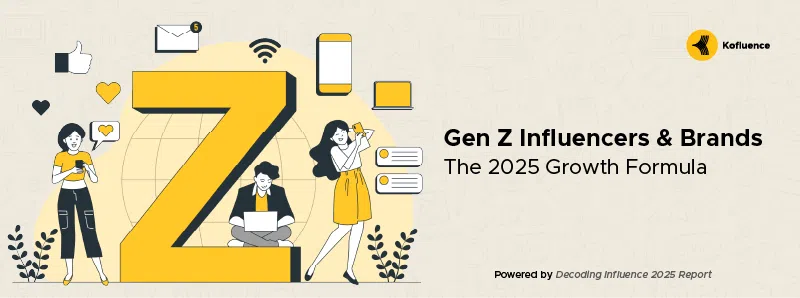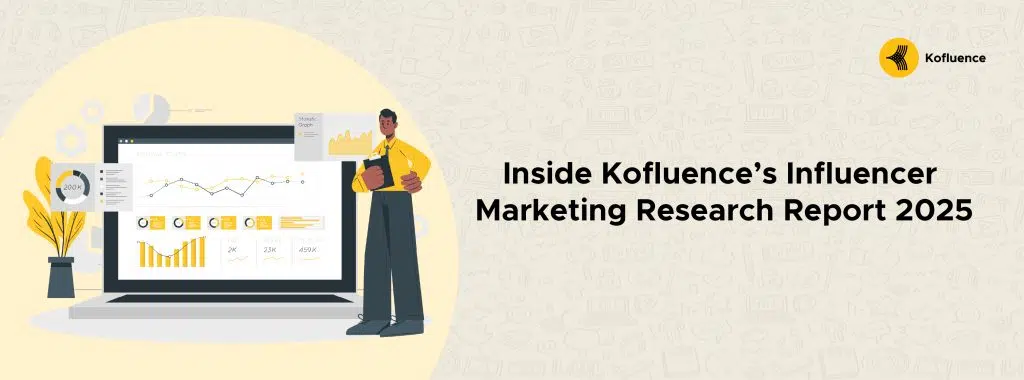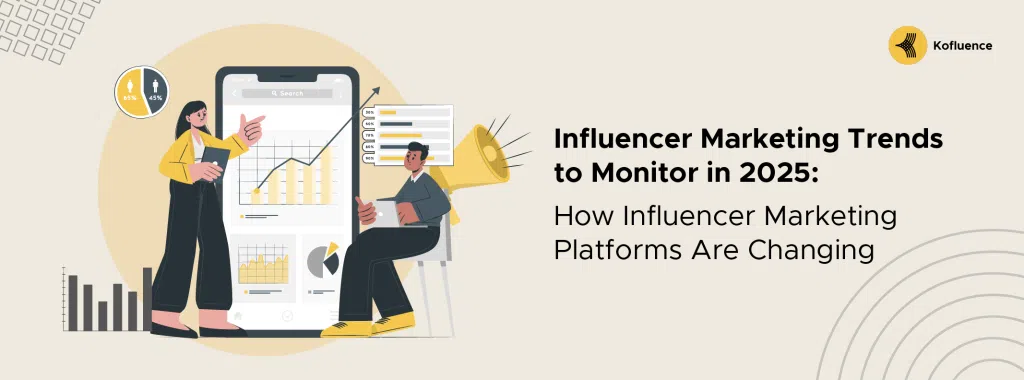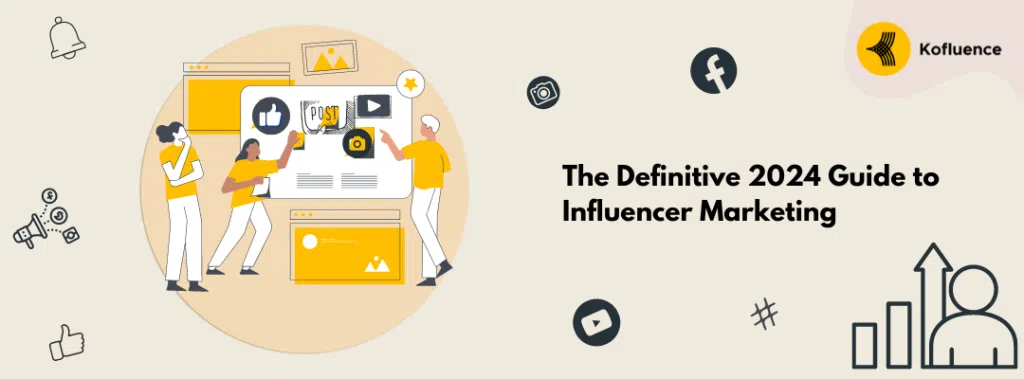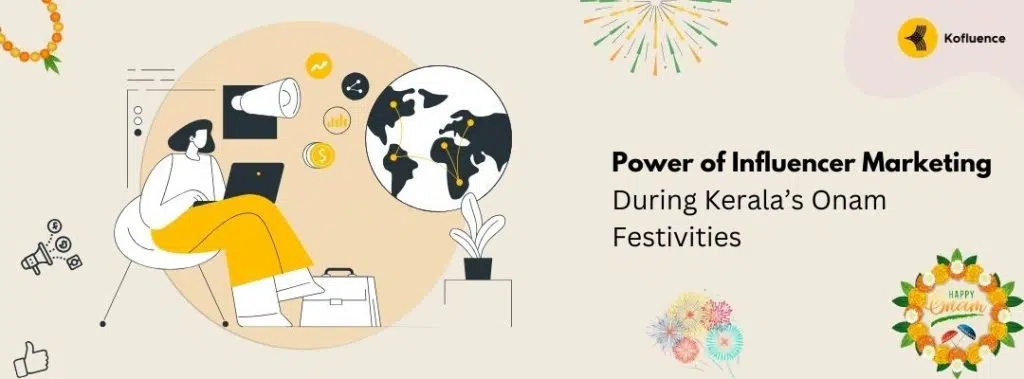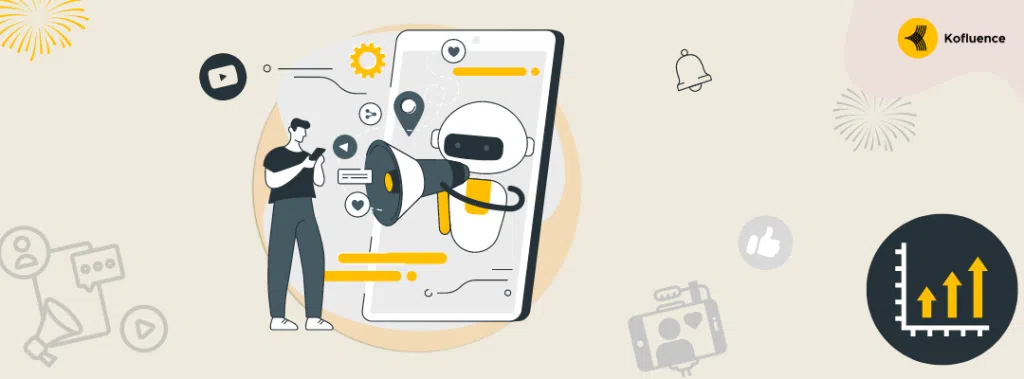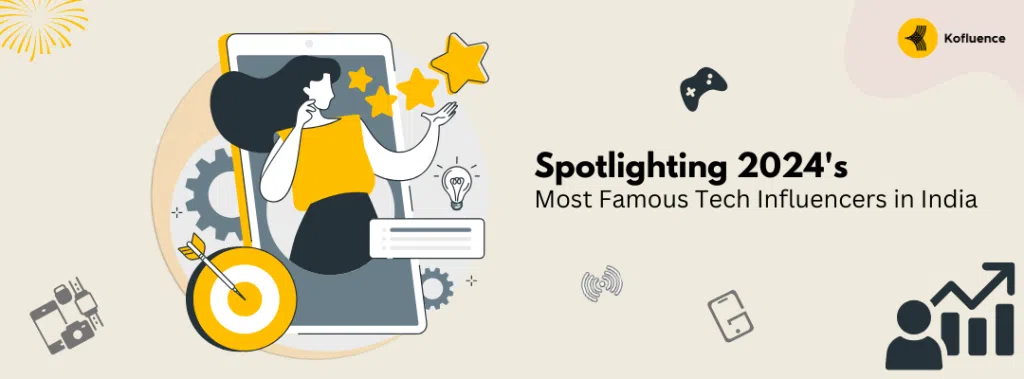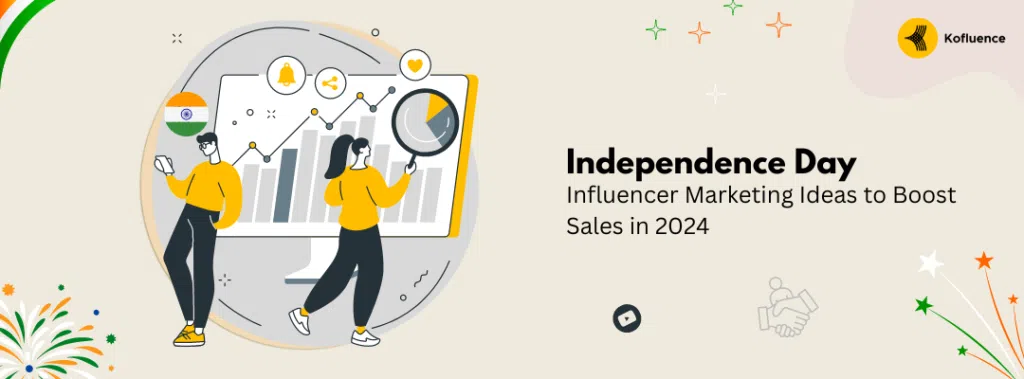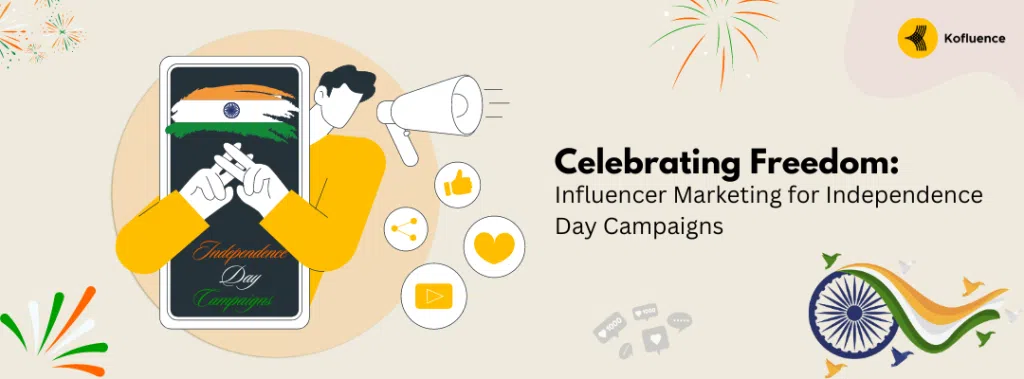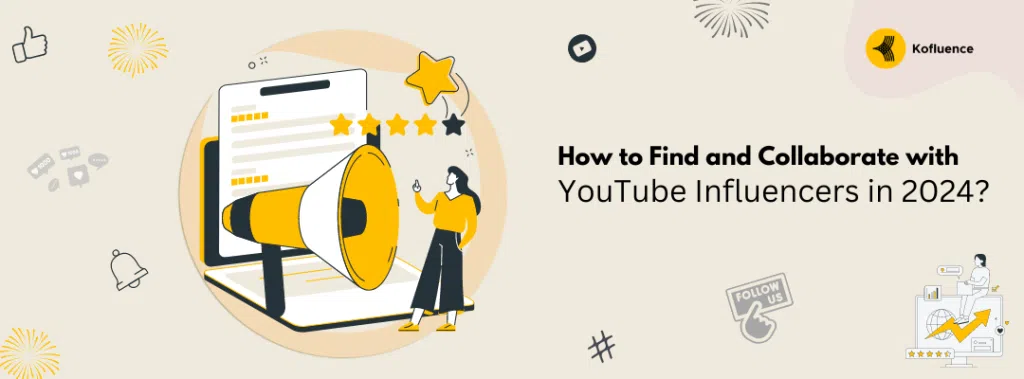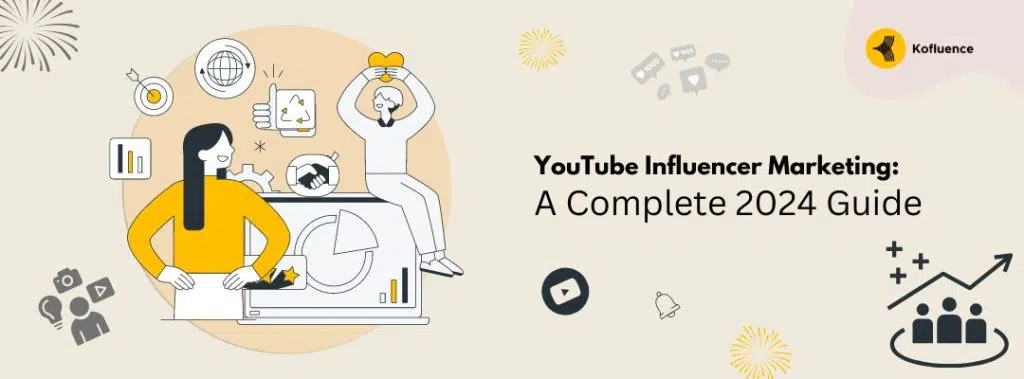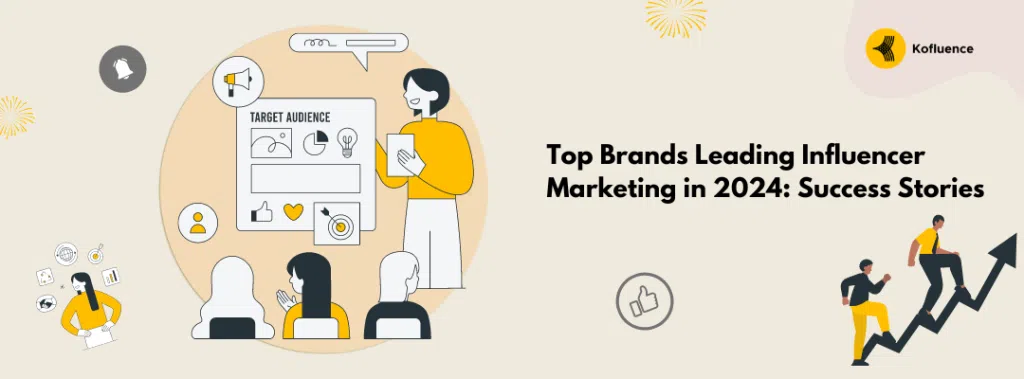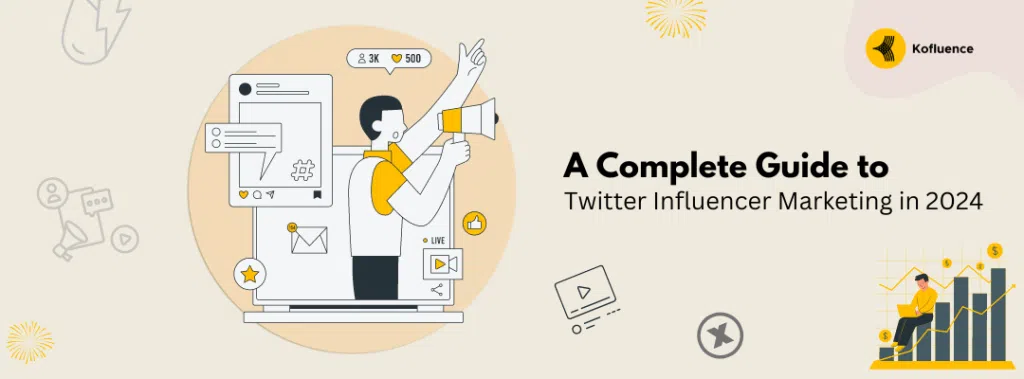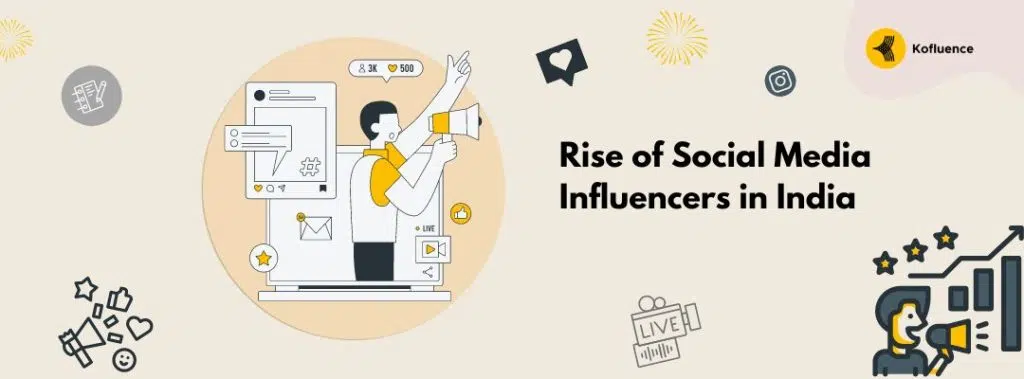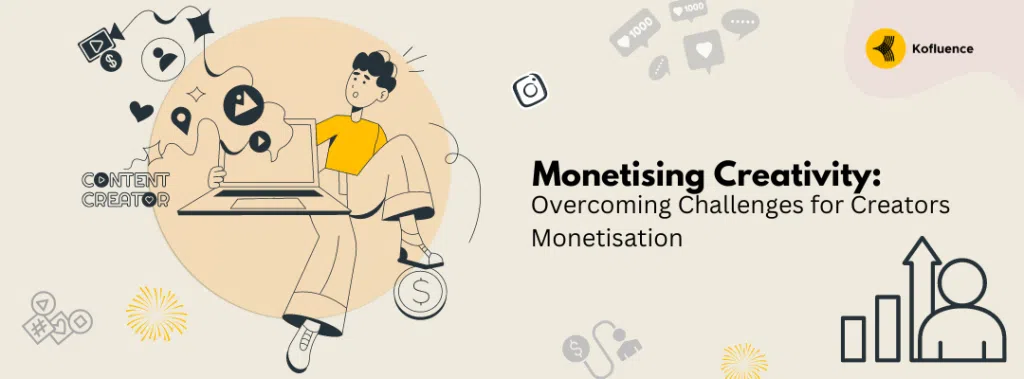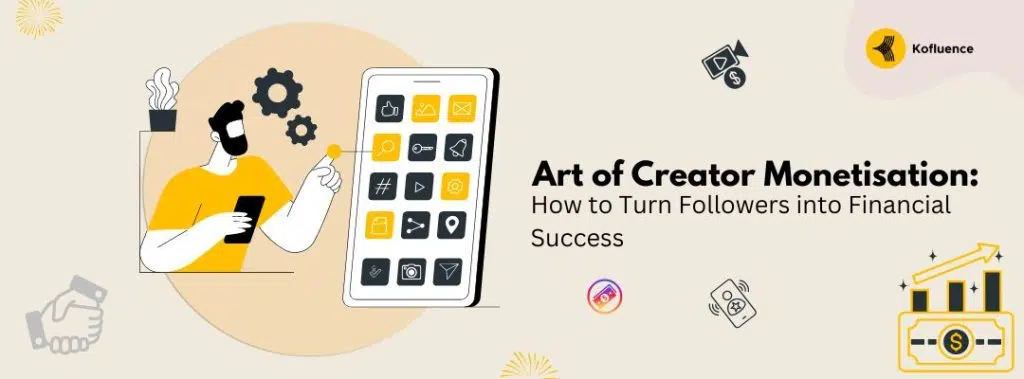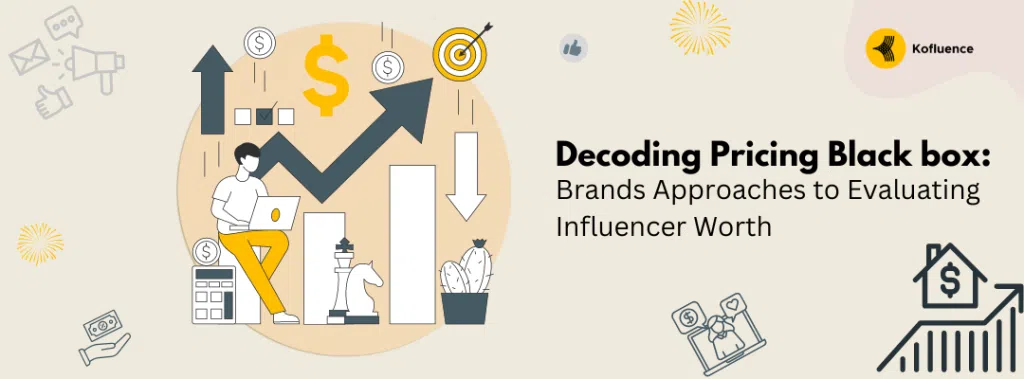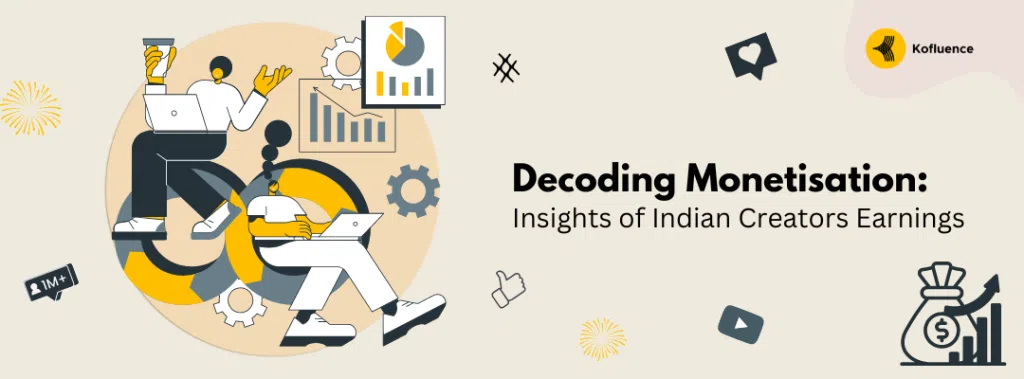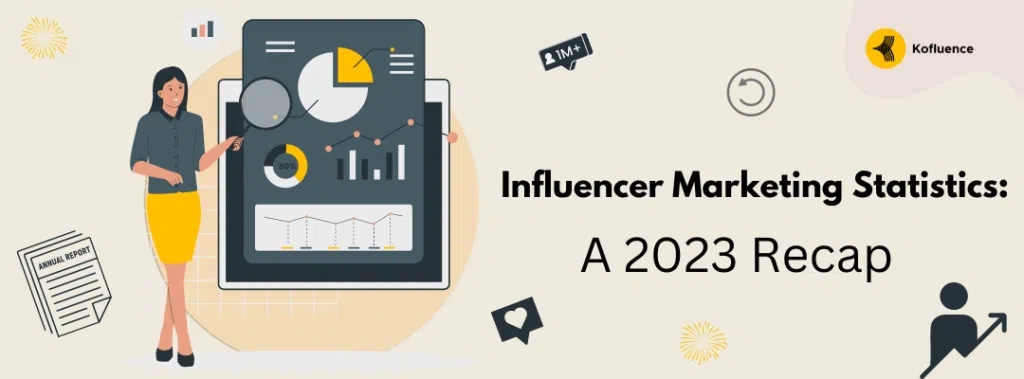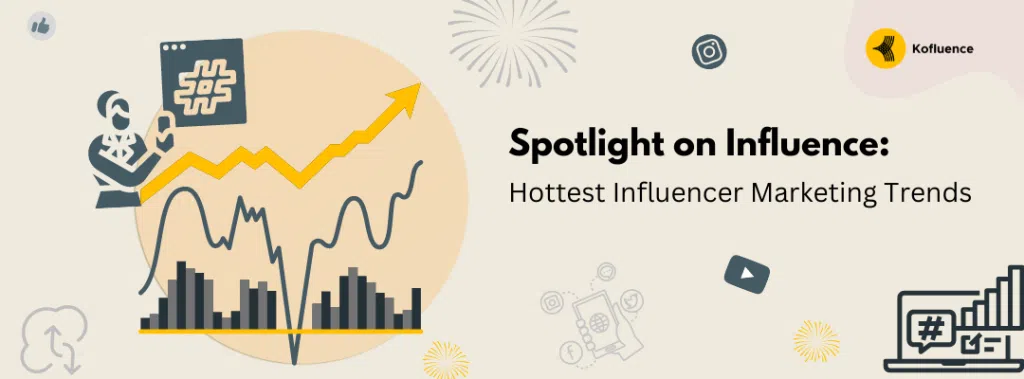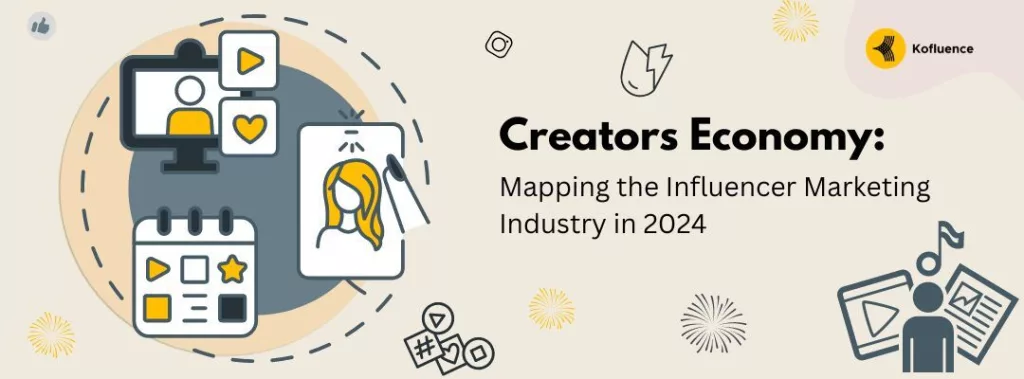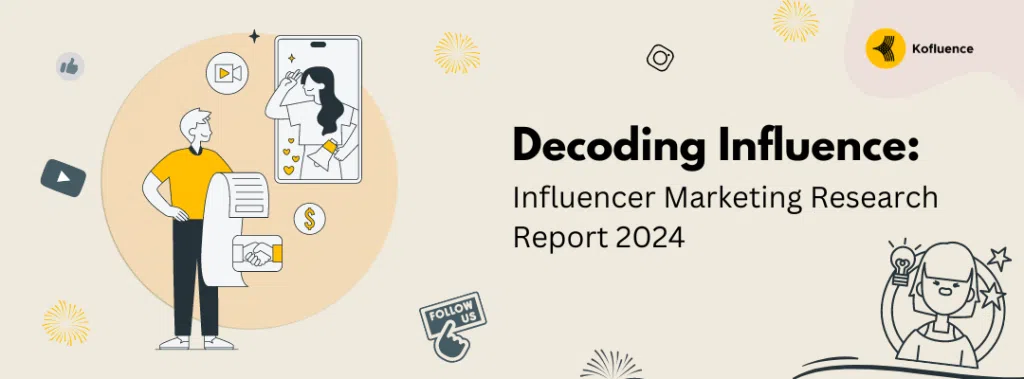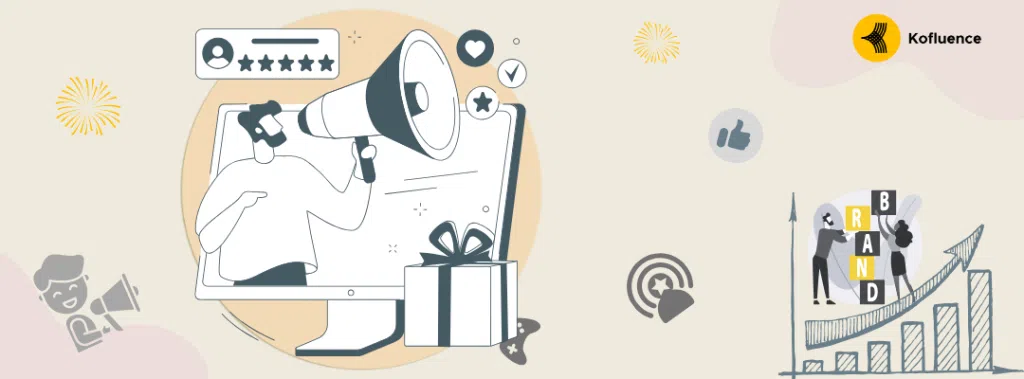Listen to Audio Blog
Table of contents:
What are the different types of online content creators?
Key Strategies for Brands Collaborating With Creators
Identifying the right influencers for your brand
Structuring an effective influencer marketing campaign
Maximizing impact through influencer partnerships
Tracking campaign progress and measuring ROI
Leveraging new trends for increased engagement
Introduction
Welcome to the world of influencer marketing! In the digital age, where consumers are bombarded with endless advertising, influencer marketing breaks through the noise by using influential individuals to promote your brand. Central to this transformation are the individuals known as online content creators. But what exactly does it mean to be an online content creator?
An online content creator refers to an individual or entity that produces and publishes content on the internet. This content can take various forms, including but not limited to written articles, blog posts, videos, podcasts, social media posts, photographs, artwork, or other digital media. Online content creators leverage digital platforms and tools to reach and engage with their target audience, often building a dedicated following and community around their content.
In this blog post, we will delve into the world of online content creation and explore the significance of these creators in shaping digital media. So, whether you’re a brand looking to collaborate or simply curious about the inner workings of the digital realm, join us as we unravel the world of online content creators and their profound impact on the online landscape.
What are the different types of online content creators?
The rise of the internet and social media platforms has given birth to a diverse and vibrant community of online content creators. These creators play a pivotal role in shaping digital culture and engaging audiences across various niches. In this blog post, we will explore the different types of online content creators, each with their unique style, format, and expertise. Understanding these various types can help brands and marketers identify the right creators to collaborate with in their influencer marketing campaigns.
Bloggers:
Bloggers are content creators who primarily express themselves through written content on their websites or blogs. They often share their experiences, expertise, and opinions on specific topics such as travel, fashion, food, lifestyle, or personal development. Bloggers use storytelling techniques, combined with images and videos, to engage and educate their readers.
Vloggers:
Vloggers, short for video bloggers, create content in video format. They share their experiences, knowledge, or entertainment through videos on platforms like YouTube, TikTok, or Instagram. Vloggers may cover a wide range of topics, including travel, beauty, gaming, technology, or daily vlogs, providing an immersive and visual experience for their audience.
Social Media Influencers:
Social media influencers have gained prominence in recent years, leveraging platforms like Instagram, Twitter, Facebook, and Snapchat to reach and engage their followers. These creators build a loyal audience by sharing curated content, lifestyle updates, product recommendations, or insights into their niche. Social media influencers often collaborate with brands and promote products or services to their engaged follower base.
Podcasters:
Podcasters create audio content that listeners can download or stream. They host podcasts covering a wide range of topics, including interviews, storytelling, education, news, or entertainment. Podcasting offers a unique platform for content creators to connect with their audience in a more intimate and conversational manner.
Live Streamers:
Live streamers engage with their audience in real time by broadcasting live videos through platforms like Twitch, YouTube Live, or Facebook Live. They often specialize in gaming, fitness, cooking, art, or music and build a dedicated community of viewers who interact through live chat and comments.
Photographers and Visual Artists:
Photographers and visual artists showcase their talent and creativity through captivating visuals. They create visually appealing content, including photographs, digital art, illustrations, or graphic designs, often sharing their work on platforms like Instagram, Behance, or Pinterest. These creators tend to partner with brands to create visually compelling campaigns.
Expert Educators:
Expert educators are content creators who specialize in a specific field or subject and provide educational content. They create tutorials, courses, or informative content to teach their audience about topics such as technology, science, finance, or personal development. Expert educators collaborate with educational brands in the industry to offer value-added content or promote educational products.
Key Strategies for Brands Collaborate With Creators
. Identifying the right influencers for your brand
Defining your campaign objective is crucial before identifying the right type of influencers for your brand. You must establish what you are trying to achieve through the campaign to select an influencer who can help you achieve those objectives. For instance, if you are looking to increase brand awareness, then consider an influencer with a larger following instead of an influencer with higher engagement.
When looking for the right type of influencers, make sure to go for those who fit naturally into your brand’s niche or industry. If you work with an influencer whose ideals contradict yours, your message may come across as insincere. It is best to choose an influencer who aligns with your brand’s values and lifestyle.
Analyzing the influencers’ credibility and engagement is another important factor to consider. Before collaborating with an influencer, take time to review their content and engagement metrics to ensure that they are a natural fit for your brand. This analysis will give you a clear understanding of the type of content the influencer posts, the type of audience they cater to, and the engagement rate of their followers.
. Structuring an Effective Influencer Marketing Campaign:
Once you have identified the right influencers for your brand, the next step is to structure an effective influencer marketing campaign. A well-structured campaign helps in achieving your campaign goals and maximizing returns on investments.
Setting clear campaign goals is the first step toward creating an effective influencer marketing campaign. This will help you determine the campaign’s scope, target audience, available budget, and potential influencers. The goals should be aligned with your overall marketing strategy and should be specific, measurable, achievable, relevant, and time-bound (SMART).
Once you’ve defined your campaign goals, the next step is to develop a clear and concise brief for the influencers. The brief should include campaign objectives, brand guidelines, dos and don’ts, compensation details, deliverables, timeline, and other relevant information. The brief should be easy to understand, comprehensive, and should communicate your expectations effectively.
Providing creatives to the influencers is crucial in ensuring that your brand message is communicated effectively. Creatives such as images, videos, hashtags, and captions can be provided to the influencers for inclusion in their posts. You can also provide product samples and access to exclusive events to help influencers create more authentic and relatable content.
Co-creating content with influencers is becoming increasingly popular in influencer marketing campaigns. Co-creating content involves collaborating with influencers to online create content that resonates with the target audience while promoting your brand message. This ensures that the content aligns with both the influencer’s and the brand’s values. Co-created content can be used across various social media platforms, increasing the campaign’s reach and engagement.
In conclusion, structuring an effective influencer marketing campaign involves setting clear campaign goals, developing a concise brief for the influencers, providing creatives, and co-creating content. With these strategies in place, brands can develop campaigns that achieve their goals while maximizing returns on their investments. Remember, influencer marketing is a strategic and continuous process, and it requires consistent effort and analysis to remain effective.
. Maximizing impact through influencer partnerships
Influencer marketing campaigns can be optimized even further through deeper and more meaningful partnerships with influencers. In this way, brands can maximize the impact of their influencer marketing campaigns and achieve broader and more sustained outcomes. Here are some key ways for brands to deepen their partnerships with content creators:
Encouraging influencer-generated content can be a powerful strategy for promoting the brand and creating buzz around campaigns. This approach can also help to ensure that influencers are fully invested in the brand and campaign objectives. Brands can provide influencers with clear guidelines for generating content that aligns with their brand values and campaign goals while allowing for creativity and individual flair.
Collaborating beyond single campaigns is another way to deepen influencer partnerships. Brands can work with influencers over multiple campaigns to build long-term relationships and create a sense of continuity. This can also help to build credibility and trust with audiences, as consumers come to recognize influencers as brand ambassadors.
Engaging influencers in the brand-building process can also lead to more meaningful partnerships and impactful campaigns. By involving influencers in product development, market research, and other aspects of brand strategy, brands can benefit from their unique insights and perspectives. This collaborative approach can foster deeper relationships and help to ensure that campaigns resonate with audiences.
Ultimately, the key to maximizing impact through influencer partnerships is to approach collaborations as long-term, value-adding relationships. By prioritizing authenticity, creativity, and mutual benefit, brands and influencers can create campaigns that truly resonate with audiences and drive results.
. Tracking campaign progress and measuring ROI
One of the most significant benefits of influencer marketing is its measurability. Campaign progress can be tracked, and ROI can be calculated and measured. However, to track the campaign’s effectiveness, you must first define its KPIs. Key performance indicators (KPIs) will differ depending on your campaign objectives. For example, if your goal is to raise brand awareness, you might measure metrics such as impressions, reach, and engagement. If converting leads into sales is your objective, you might use sales data, conversion rates, and website traffic as your primary KPIs.
Once you’ve defined the KPIs, you can proceed to monitor and measure the campaign outcomes. Measuring these outcomes will help you evaluate whether the campaign is on track to deliver the desired results. It’s essential to use the right tools to measure campaign outcomes accurately. These tools include social media listening tools, CRM systems, Google Analytics, and influencer marketing platforms. Measuring campaign outcomes regularly will provide you with the insights you need to optimize content and make adjustments to the campaign.
Tracking and analyzing influencer performance is also critical in measuring the success of an influencer marketing campaign. An influencer’s relevance, reach, and resonance are key factors in their ability to impact consumer behavior. Therefore, it’s essential to track metrics such as followers, engagement rates, and click-through rates to evaluate an influencer’s performance. You can also evaluate the contribution of different influencers in a single campaign to learn which ones impact sales and revenue the most.
Calculating ROI and refining campaign strategies is the final stage in measuring the success of your influencer marketing campaign. Calculating ROI involves comparing the total revenue generated by the campaign to the total amount spent on the campaign. To get an accurate picture of ROI, it’s crucial to factor in all the direct and indirect costs, including influencer fees, online content creation costs, and distribution costs. By comparing the ROI to the cost of other marketing campaigns, you can evaluate the effectiveness of your influencer marketing campaigns and refine strategies accordingly.
. Leveraging new trends for increased engagement
Let’s talk about the latest trends in influencer marketing that can help you increase engagement and drive better results for your brand.
First up, we have TikTok and Instagram Reels, which have been taking the social media world by storm. Both platforms have enabled influencers to create short-form, visually engaging and entertaining content that resonates with their followers. Brands can leverage this trend by partnering with influencers who have a significant following on these platforms. By co-creating branded content with influencers, brands can drive higher engagement and connect with a younger audience in a more authentic way.
Live streaming is another trend that has gained considerable momentum among influencers and their followers. From conducting Q&A sessions to live events, influencers have been able to draw in a significant audience through live streaming. Brands can use live streaming to launch new products, showcase their brand values and partner with influencers to create engaging content that resonates with their target audience.
Keeping up with Instagram’s algorithm updates is another trend that brands need to be mindful of. Brands can leverage this trend by partnering with micro-influencers who have a highly engaged following on the platform. Micro-influencers can help brands create highly targeted and relevant content that resonates with their followers.
Finally, let’s not forget the impact of COVID-19 on influencer marketing. With people spending more time on social media platforms, influencers have been able to create and share content that resonates with their followers. Brands can take advantage of this trend by teaming up with influencers who can create content that caters to the current needs and preferences of their audience.
In summary, to leverage the latest trends in influencer marketing, brands need to keep an eye on emerging social media platforms such as TikTok and Instagram Reels, get involved in live streaming, work with micro-influencers on Instagram, and create content that aligns with the current preferences of their audience.
What are some common challenges or issues that online content creators face when participating in influencer marketing campaigns?
Let us explore some of the common challenges and issues faced by Online content creators and discuss how Kofluence, a leading influencer marketing platform, provides solutions to drive results in collaborative campaigns.
Finding the Right Brand Collaborations:
One of the primary challenges for online content creators is finding the right brand collaborations that align with their niche, values, and audience. It can be time-consuming and challenging to identify brands that are a good fit and will resonate with their followers. Kofluence tackles this problem by offering a carefully selected platform where content creators can establish connections with brands that share their interests and target audience. The platform’s advanced matching algorithms ensure that collaborations are more likely to be successful and beneficial for both parties involved.
Negotiating Fair Compensation:
Determining fair compensation is another challenge faced by online content creators. They invest significant time and effort into creating high-quality content, and it’s essential that they receive fair compensation for their work. However, negotiating compensation terms can be daunting, especially for newer influencers who may not have a clear understanding of their value. Kofluence simplifies this process by providing transparent guidelines and standardized compensation rates based on the content creator’s reach, engagement, and other relevant metrics. This ensures that content creators receive fair compensation for their contributions.
Maintaining Authenticity:
Online Content creators know the importance of authenticity as it directly influences their relationship with their audience. Nevertheless, they may encounter difficulties in preserving their genuine voice while promoting branded content as part of influencer marketing campaigns. Kofluence emphasizes the importance of authenticity and encourages content creators to collaborate with brands whose values align with their own. Through fostering genuine partnerships, Kofluence assists content creators in developing authentic and captivating sponsored content that deeply connects with their audience.
Managing Expectations and Deliverables:
Effective communication and expectation management play a pivotal role in influencer marketing campaigns. Online Content creators may encounter challenges when it comes to understanding the brand’s expectations, campaign deliverables, and timelines. Kofluence streamlines this process by providing a centralized platform where brands can outline their campaign requirements, objectives, and deliverables. Content creators can easily access all the necessary information, ensuring they clearly understand the brand’s expectations and can deliver high-quality content within the given timeframe.
Ensuring ASCI Compliance:
Upholding the integrity of influencer marketing requires strict adherence to the Advertising Standards Council of India (ASCI) guidelines. Navigating and complying with these guidelines can pose challenges, particularly for emerging influencers. As an official ASCI partner, Kofluence empowers content creators with educational resources and comprehensive guidance to ensure compliance with the latest ASCI guidelines. By choosing Kofluence, influencers gain the advantage of working with a platform that not only prioritizes transparency and compliance but also keeps them at the forefront of industry trends.
Conclusion
So, here’s what you need to take away from this blog:
Online content creators are powerful drivers of digital media, shaping trends and engaging audiences across various platforms. To succeed in influencer marketing, it is crucial to select suitable influencers for your brand, design impactful campaigns, establish fruitful partnerships, monitor progress, adapt to emerging trends, and measure ROI. Embracing influencer marketing strategies is of utmost importance. Collaborating with creators requires brands to identify the right individuals, structure effective campaigns, amplify impact through partnerships, track progress and measure ROI, and leverage new trends to enhance engagement. If you haven’t already, it’s time to join the movement. Influencer marketing is a potent tool that enables you to connect with new audiences, cultivate trust among customers, and ultimately drive more sales.
[powerpress]
So what are you waiting for? Embrace the possibilities and sign up with Kofluence today!
If you found this blog to be helpful browse through our website for other blogs on similar topics or get in touch with us for your next influencer marketing campaign! Download the Kofluence app and find relevant campaigns catering to your target audience! To opt-in, download the Kofluence app here: iOS users, and Android users.

